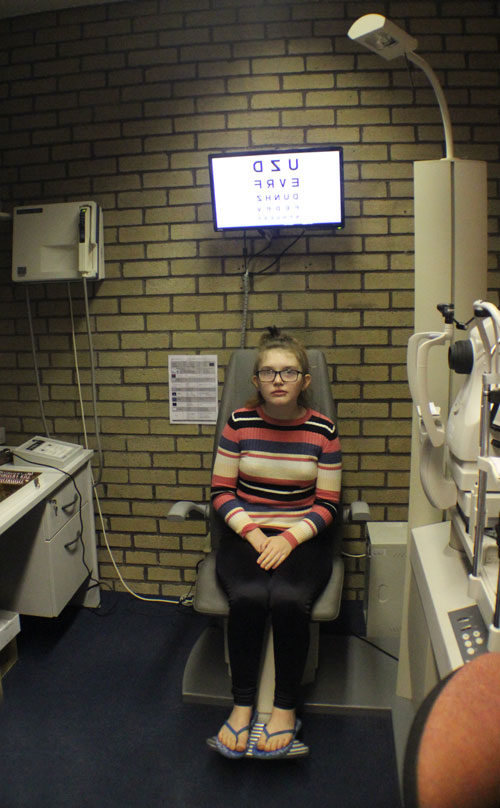Children's Eyecare

Good vision is critical to a child’s early educational, functional, and social development. Parents should be aware that it is essential to address the child’s visual needs as early as possible. Healthy sight can contribute to a healthy start in life.
The eyes continue to develop during childhood. The majority of children at birth are long sighted (hypermetropic) which, if within normal limits, will correct itself as the child matures. However if a refractive error is not properly corrected there is a risk of permanently poor vision.
Children’s eyes, as well as their visual needs, differ from those of adults in a number of important ways.
A child’s immature visual system is more prone to irreversible damage. It is therefore important to have your child regularly assessed by a registered optical professional.
The main childhood eye problems relate to improper development of the visual system. Conditions such as:
- amblyopia (lazy eye),
- strabismus (squint)
- uncorrected refractive error (short sightedness [myopia], long sightedness and astigmatism) are the most common.
They are also all related. If a child has a squint, or if one eye has a significantly different refractive from the other, this will lead, if uncorrected, to a lazy eye. The less dominant eye is effectively “switched off” and does not develop properly. The child accommodates to use the eye which is least long-sighted which leaves the other eye with reduced visual acuity.
The Critical Period
A child’s visual system develops over the first seven years of their life. Amblyopia is best treated before the age of four but continued improvement can be made up to the age of seven; after this critical period perfect vision is difficult to achieve.
Amblyopia and squints (strabismus) are evident by the age of four and may be detected by the parent, health visitor or a teacher, but if they are not picked up and if a child has an uncorrected refractive error it will impact on the child’s ability to perform well at school. It may also hinder the child in later life to enter certain professions where good eyesight is a prime requirement.
What You Should Watch For
- Children screwing their eyes up or rubbing their eyes
- Children who are clumsy, bump into things
- Children who have problems with coordination eg catching or kicking a ball
- Children sitting very close to the TV or with their nose too close to a page to read
- Children who refuse to read or have difficulties concentrating
- A child that perceives that text on a page doesn’t stay in a straight line but slopes
- A child who is introverted or a “day-dreamer”
- A child who is disruptive or have a short attention span
- A child undergoing long-term medication – there are a number of different medications which children which may have eye-related side effects and could impact negatively on healthy sight eg steroids, ADHD drugs, anti-bedwetting drugs, antihistamines, anti-depressants
- Children complaining of headaches – most headaches don’t have an ocular cause; however some children may have an uncorrected refractive error and/or they may have a binocular vision problem that causes headache
FREE NHS Sight Tests
In the UK all children under-16 and those under-19 and in full-time education qualify for a free NHS-funded sight test. Remarkably only 22 per cent of under-16s have ever had a sight test.

Dispensing
A dispensing optician can ensure children’s spectacles fit properly, look great and provide the best vision possible and there’s a wide variety of attractive children's frames to choose from.
Many children, especially those who participate in a sport or those entering their teenage years can also opt to wear contact lenses.

